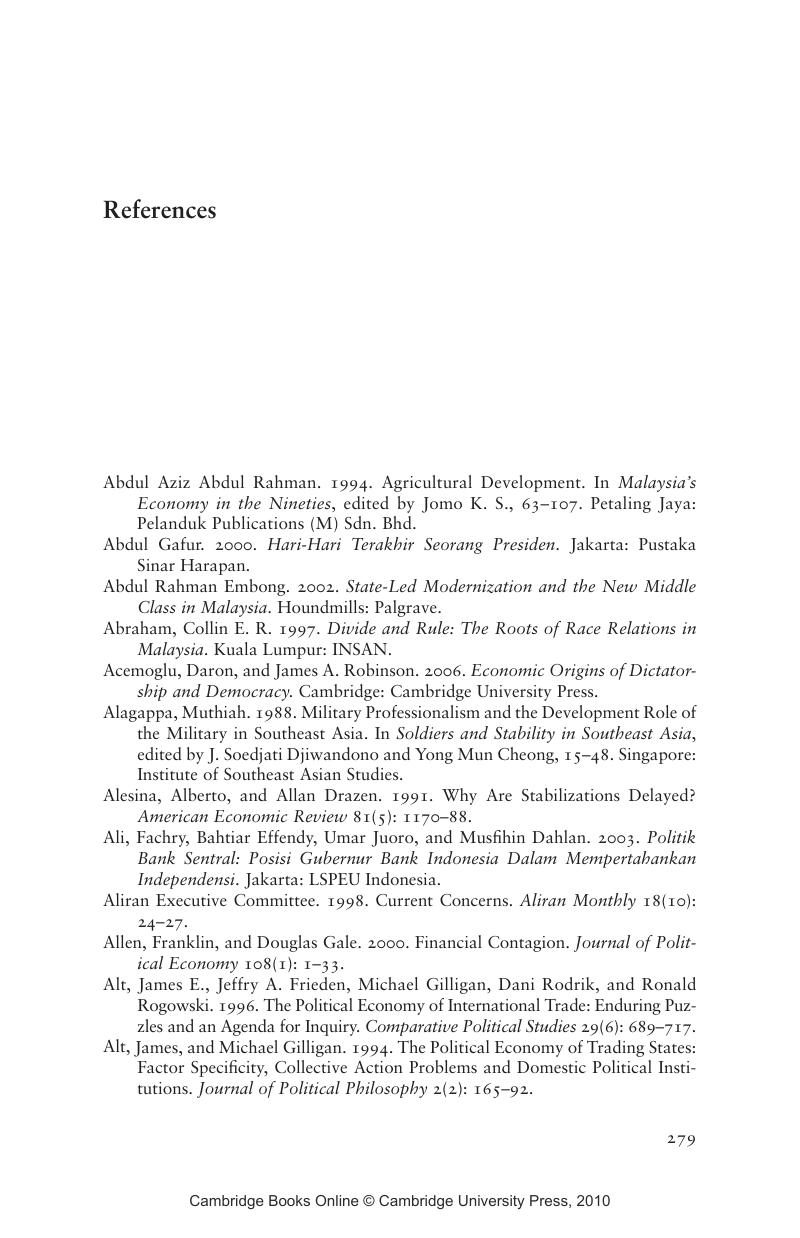 Economic Crises and the Breakdown of Authoritarian Regimes
Economic Crises and the Breakdown of Authoritarian Regimes Book contents
- Frontmatter
- Contents
- List of Tables
- List of Figures
- Acknowledgments
- Terms and Abbreviations
- 1 Crises, Adjustment, and Transitions
- 2 Coalitional Sources of Adjustment and Regime Survival
- 3 Authoritarian Support Coalitions: Comparing Indonesia and Malaysia
- 4 Adjustment Policy in Indonesia, June 1997–May 1998
- 5 Adjustment Policy in Malaysia, June 1997–December 1999
- 6 Authoritarian Breakdown in Indonesia
- 7 Authoritarian Stability in Malaysia
- 8 Cross-National Perspectives
- 9 Conclusions
- References
- Index
- References
References
Published online by Cambridge University Press: 21 January 2010
- Frontmatter
- Contents
- List of Tables
- List of Figures
- Acknowledgments
- Terms and Abbreviations
- 1 Crises, Adjustment, and Transitions
- 2 Coalitional Sources of Adjustment and Regime Survival
- 3 Authoritarian Support Coalitions: Comparing Indonesia and Malaysia
- 4 Adjustment Policy in Indonesia, June 1997–May 1998
- 5 Adjustment Policy in Malaysia, June 1997–December 1999
- 6 Authoritarian Breakdown in Indonesia
- 7 Authoritarian Stability in Malaysia
- 8 Cross-National Perspectives
- 9 Conclusions
- References
- Index
- References
Summary

- Type
- Chapter
- Information
- Economic Crises and the Breakdown of Authoritarian RegimesIndonesia and Malaysia in Comparative Perspective, pp. 279 - 312Publisher: Cambridge University PressPrint publication year: 2009
